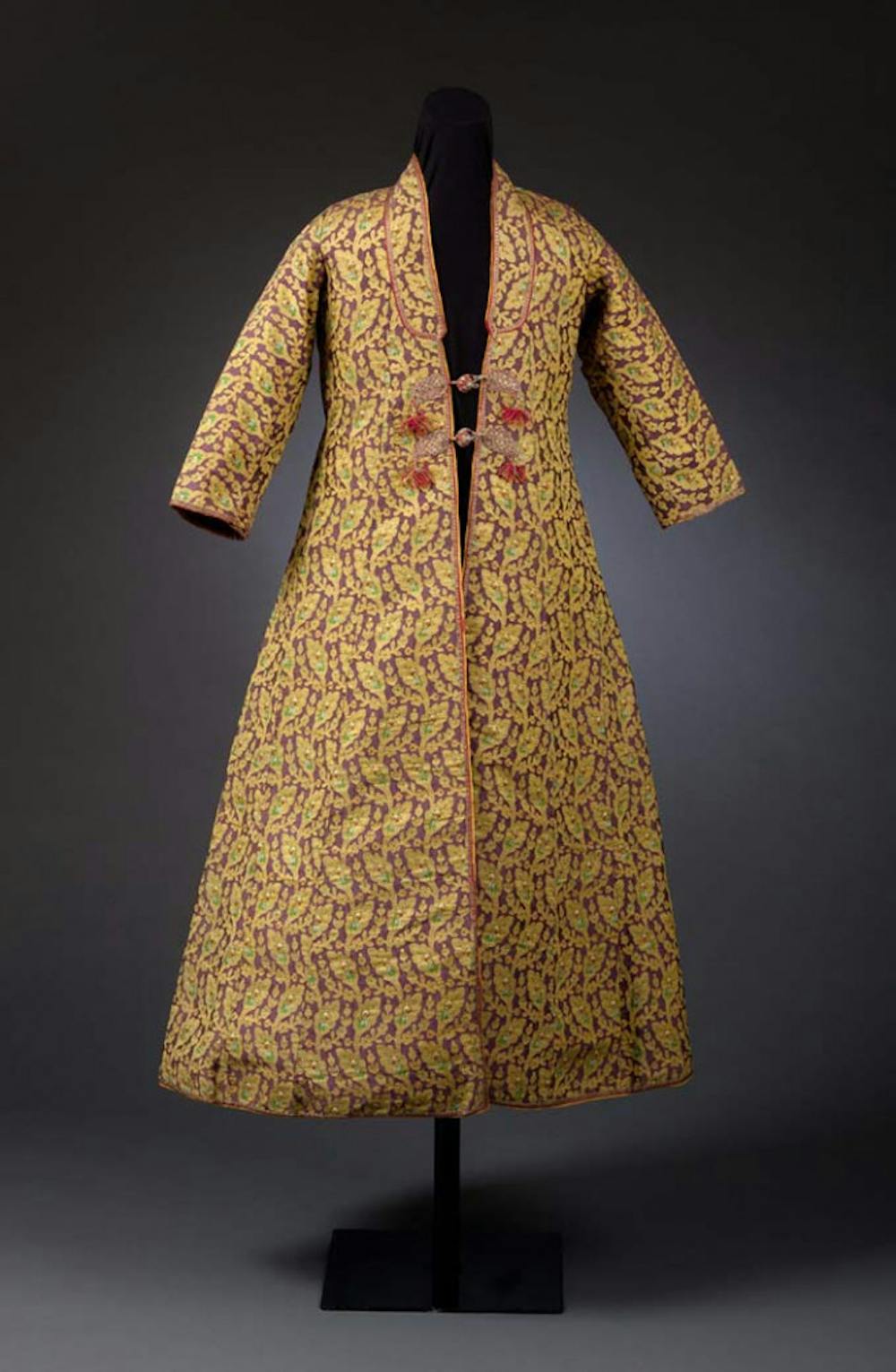An exhibit featuring over 100 exquisite works of Islamic art is now on display at the Middlebury College Museum of Art, making it the first Islamic art exhibition in a Vermont museum in at least 30 years.
Located on the first floor of Mahaney Center for the Arts, this rich collection embodies the long history and intercontinental reach of Islamic art.
“Wondrous Worlds” features artwork in nearly all media, including ceramics, clothing, glassware, jewelry, metalworks, musical instruments, paintings, photographs, prayer rugs and textiles.
Highlights include 19th-century Indonesian crowns (fashioned from palm leaves, gold wire, animal fibers and wood), prayer-books adorned in leather and gold, Egyptian tent hangings inscribed with calligraphic and geometric patterns (measuring 160 square feet) and much more.
“Wondrous Worlds” officially opened at the Middlebury College Museum of Art on Sept. 14 and will stay through Dec. 2.
Middlebury community members and college students gathered for a first look at the exhibit during an opening reception at 5 p.m.
The diverse media presented in “Wondrous Worlds” reflect principles and practices of Islam across the world and throughout time, including pieces that date back to the ninth century as well as contemporary works. However, the exhibit is organized in a thematic sequence rather than a chronological one.
The show opens with an introduction to the Five Pillars of Islam: declaration of faith, daily prayers, charity, fasting for Ramadan and the Hajj Pilgrimage.
The exhibition then expands upon five themes, ranging from calligraphy and architecture to clothing and food. Each theme provides perspective into the utility, artistry and cultural history of the featured objects.
Because the Islamic faith discourages the creation of images of sentient beings, Islamic art is largely dominated by traditional geometric patterns and calligraphy. Not all Islamic art is strictly religious art, as it also includes the art of the varied cultures of Islamic societies.
Cynthia Packert, a professor of Art History and guest curator of the collection, gave opening remarks while guests snacked on tasty Middle Eastern delicacies last Friday. Packert highlighted the cross-cultural nature of the exhibition.
“In the centuries before amazon.com there were still lots of things moving around the planet in both directions,” she said.
The rapid spread of Islam was accompanied by the development of trade networks for material goods. Objects with imagery of carnations, tulips and birds reflect European influence.
Packert also discussed her role in Middlebury’s acquisition of this exhibit, which had been a three-year process.
“Wondrous Worlds” originally opened in February 2016 at the Newark Museum of Art in Newark, N.J.
A few years ago, Packert spoke with the museum’s Curator of Asian Art, Katie Paul, about obtaining Islamic art for Middlebury’s collection. At the time, the Newark Museum was renovating its Islamic art section and Packert’s request inspired Paul to turn the collection into a moving show. Two recent Middlebury graduates were interns at the Newark Museum and helped put together objects and information for the original opening.
Since its inception, “Wondrous Worlds” has had an active life. After its debut in Newark, it moved to Houston, Texas. After its time at Middlebury, it will travel to Emory University.
Packert emphasized the importance of bringing an exhibit like “Wondrous Worlds” to Middlebury.
“It makes all the difference in teaching and understanding the arts if you actually have real works of art to look at,” she said. “My hope is that after seeing this exhibition [audiences] will emerge with a much richer appreciation for the diversity and complexity of the arts of the Islamic world.”
More information can be found at go.middlebury.edu/museum.
Diverse Islamic Art Exhibition Opens at College

COURTESY PHOTO
Floral and geometric patterns feature prominently in much Islamic art.
Floral and geometric patterns feature prominently in much Islamic art.
Comments



